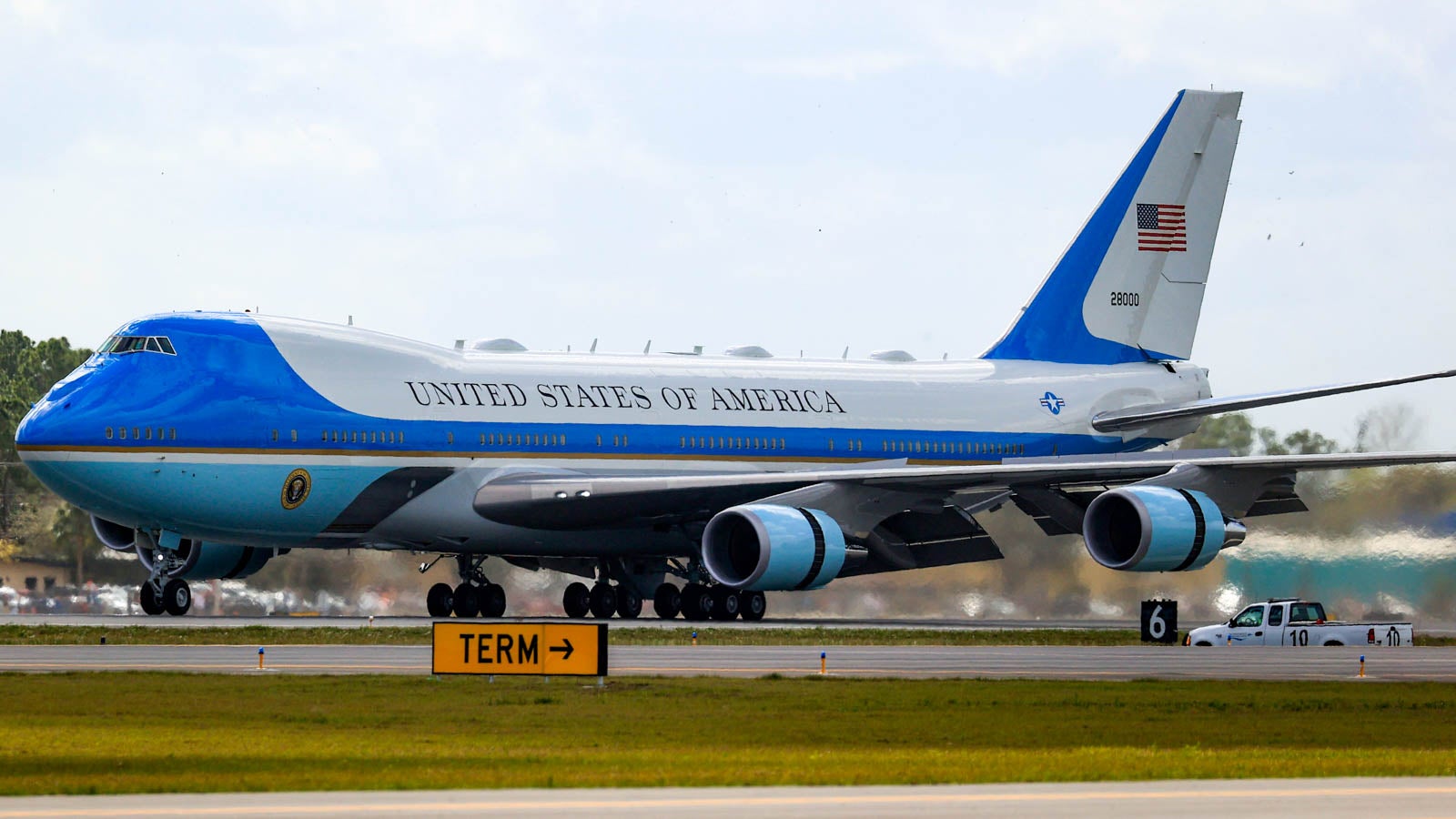Trump team’s COVID-19 infections raise questions about coronavirus aboard Air Force One
(CNN) — The positive coronavirus test for a high-profile Air Force One passenger raises the possibility that has concerned aviation experts for months: that the virus can easily spread inside a confined aircraft cabin.
Experts fear the infection potentially puts at risk hundreds of people who travel on, operate and maintain “the flying White House” — threatening not only a highly recognizable icon of America, but also the smooth operation of a key national security tool used to evacuate the president in a crisis.
Administration officials said Friday that presidential senior adviser Hope Hicks was showing coronavirus symptoms while she flew on the world’s most famous jet earlier this week, raising the concern her infection could be linked to the infections of President Donald Trump and first lady Melania Trump.
Experts have cautioned that during the pandemic, the unique air flow dynamics in the confined cabin of a jetliner — even one as large as the Boeing 747-200, known in the military as a VC-25 — could put unmasked passengers at a risk of catching the deadly virus.
Administration officials said Friday that Hicks began displaying symptoms on the flight back from the President’s Wednesday rally in Minnesota and was isolated in a separate cabin. She was seen deplaning Air Force One from a rear set of steps not typically used by the President.
“Social distancing is much easier on Air Force One than any commercial airliner,” said Professor Yan Chen of Purdue University, a researcher who studies the airborne spread of coronavirus inside an airliner. Chen said most passengers do not sit in cramped rows on board the multi-room, highly modified jet, “but complete isolation is very difficult.”
Chen said the air onboard large jets, including commercial airliners and Air Force One, is typically filtered through High Efficiency Particulate Air, or HEPA, filters, which are designed to catch most particles. The result is the air even on large planes is completely replaced every few minutes.
Air Force One also carries a special onboard oxygen system, although its capabilities aren’t clear.
Commercial airlines insist air filters make flying in a plane safer than sitting in a shared room in a building. But it does not eliminate the risk of contracting the virus when a contagious passenger is onboard.
“If you have a patient inside of an airplane, then the droplets breathed out by this patient could be transported in the airplane,” he said.
The White House said the 747 typically used as Air Force One (the term can refer to any aircraft carrying the President) features “4,000 square feet of floor space on three levels, including an extensive suite for the President that features a large office, lavatory, and conference room.” CNN journalists who have flown on the aircraft say the President’s quarters is near the nose of the jumbo jet with a conference room over the wings. It is not clear where Hicks was sequestered on board.
The plane requires hundreds of personnel to operate, stock, and maintain — and the highly contagious nature of the virus means an onboard infection could impact more than just the high-profile passengers.
“Each of them is necessary to support a president and ensure his safety and security, so any vulnerabilities, or any illnesses in that system are going to have an impact,” said Juliette Kayyem, a CNN national security analyst and former Department of Homeland Security official.
Air Force One, for example, was used to protect President George W. Bush on September 11, 2001, as national security officials grappled with understanding the threat to the country. Bush, who was in Florida when the attack began, was eventually hustled onboard the jet and spent much of the day in the air, before returning to Washington that evening.
The current situation likely means officials in the military and at other agencies are “going to have to go to their redundancies and backup systems,” she said, such as having another set of pilots at the ready.
“The President has required us to think through this worst case scenario planning because of his own negligence about COVID,” Kayyem said.
“It is more troubling than it might initially seem,” said Kenneth Walsh, who flew on Air Force One more than 200 times in his decades as a reporter for US News and World Report and author of the 2004 book “Air Force One: A History of the Presidents and Their Planes.”
Walsh stressed that Hicks was seen not wearing a mask on the President’s plane and “there would have been plenty of opportunities for her to be in contact” with others who wouldn’t have been wearing one.
“If I were in an airplane — even if it’s Air Force One — I would wear a mask,” said Purdue’s Chen.
Walsh underscored that Air Force One stewards — United States Air Force personnel who take great pride in their work — would have no doubt been checking on Hicks, potentially exposing them to the virus.
The Air Force’s 89th Airlift Wing operates Air Force One, as well as other aircraft used to transport VIPs from Joint Base Andrews outside Washington, DC, in Maryland. It said in a statement that it follows US Centers for Disease Control and Prevention guidelines in the event of COVID-19 exposure.
“The 89th Airlift Wing has established safety procedures for day-to-day operations incorporating Centers for Disease Control’s (CDC) public health guidance and frequent COVID-19 testing of the Air Force One flight crew members. In the event any Air Force One personnel are exposed, become symptomatic, or test positive, the 89th Airlift Wing would follow the guidelines established by the CDC,” the statement said.
Walsh noted that “it’s very rare for anything negative to be associated with Air Force One.”
“Air Force One is a very special place, it’s become a symbol of the presidency,” he said.
